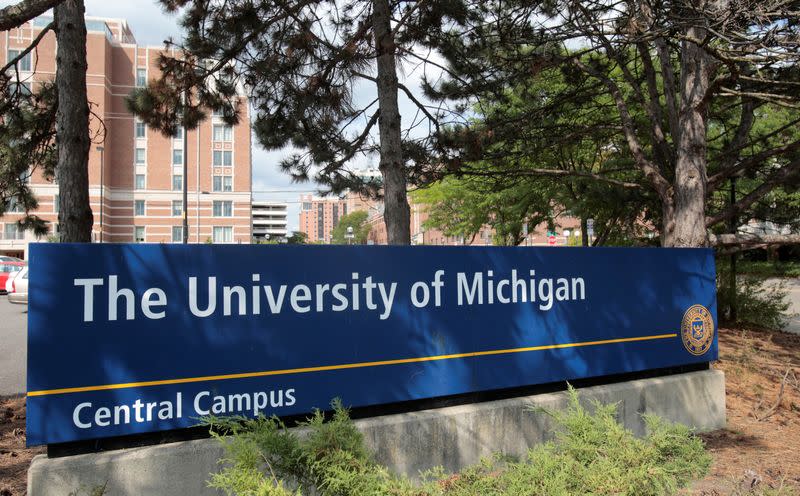
The University of Michigan (U-M) has announced the immediate closure of its Office of Diversity, Equity, and Inclusion (ODEI) and the Office for Health Equity and Inclusion (OHEI), citing compliance with recent executive orders issued by President Donald Trump. The decision marks a significant shift in the university’s approach to diversity programs, following federal directives that threaten to withhold funding from institutions maintaining such initiatives.
A Major Policy Shift
Since 2016, the University of Michigan has invested nearly $250 million into its DEI initiatives, resulting in a 46% increase in first-generation undergraduate students and over a 30% rise in Pell Grant recipients. However, in response to federal pressure, U-M leadership has decided to shutter these offices and discontinue its DEI 2.0 Strategic Plan.
In a statement, university officials emphasized their commitment to supporting students from diverse backgrounds despite the structural changes. “We will continue to prioritize financial aid, expand scholarship programs, and enhance mental health support,” the administration said. While formal DEI offices will be eliminated, multicultural student spaces will remain operational.
The Role of Trump’s Executive Orders
The decision to dissolve these DEI offices follows President Trump’s aggressive push against diversity programs in both public and private institutions. His administration argues that such programs promote racial and gender-based preferences, which, they contend, contradict the principles of merit-based advancement. In a “Dear Colleague” letter from the U.S. Department of Education, universities were warned that failure to comply with new anti-DEI directives could result in the withdrawal of federal funding (U.S. Department of Education).
Trump’s policy stance aligns with broader conservative efforts to dismantle affirmative action and similar initiatives, particularly after the Supreme Court’s 2023 ruling against race-based admissions policies. The administration maintains that DEI programs lead to reverse discrimination and foster divisions rather than inclusivity.
Mixed Reactions from the University Community

The decision has sparked a debate across the University of Michigan community. Some students and faculty see the move as a necessary adaptation to federal policies, while others view it as a step backward in fostering inclusivity.
Derek Peterson, a history professor at U-M, criticized the decision, calling it “a capitulation, an embarrassment, a departure from our mission as a university.” Many student groups have also voiced concerns, arguing that the closure of DEI offices will negatively impact marginalized communities on campus.
On the other hand, critics of DEI programs welcomed the university’s move, arguing that public funds should not be allocated to initiatives that, in their view, enforce ideological conformity and undermine meritocracy.
Broader National Impact
The University of Michigan’s decision is part of a larger trend of institutions reassessing or scaling back DEI initiatives in response to federal and state-level policies. Other universities across the country are also facing mounting pressure to eliminate diversity-based hiring practices and race-conscious policies.
In Texas and Florida, similar measures have already been enacted. Governor Ron DeSantis, for instance, signed a bill in 2023 banning public universities in Florida from spending state funds on DEI programs (Florida Department of Education).
With funding threats looming, universities that rely on federal grants and research funding are carefully evaluating how they navigate compliance with these directives while still fostering inclusive learning environments.
Future Implications for Higher Education

While the University of Michigan has promised to redirect resources toward financial aid and student support programs, the long-term impact of these policy changes remains uncertain. Will the elimination of formal DEI offices lead to a decline in campus diversity? Will universities develop alternative ways to promote equity without violating federal directives?
Experts predict that institutions will likely find ways to integrate DEI principles into broader academic and social support structures without explicitly labeling them as such. Additionally, advocacy groups and civil rights organizations are expected to challenge aspects of the new federal policy in court, arguing that dismantling DEI initiatives could violate anti-discrimination laws (American Civil Liberties Union).
Conclusion
The closure of the University of Michigan’s DEI offices marks a pivotal moment in the ongoing debate over diversity policies in higher education. While the administration has pledged to continue supporting students through other means, the impact of this decision will likely be felt for years to come.
As the federal government enforces new mandates, universities nationwide are at a crossroads—choosing between compliance and their long-standing commitments to fostering diverse and inclusive campuses. The coming months will reveal how institutions navigate this shifting landscape and whether resistance to these policies gains traction in courts or through legislative action.



